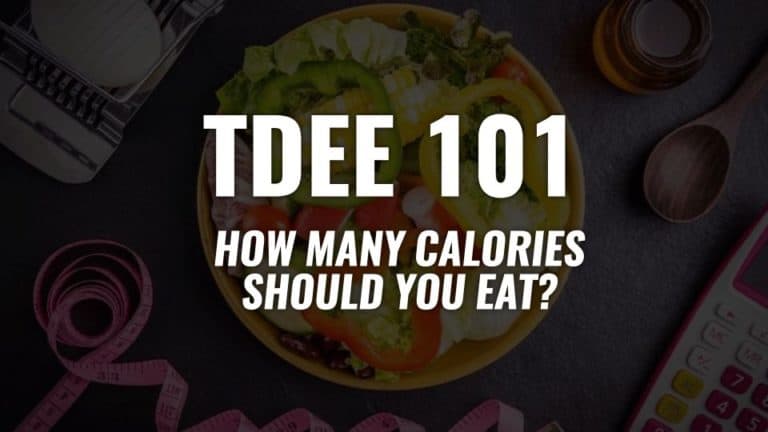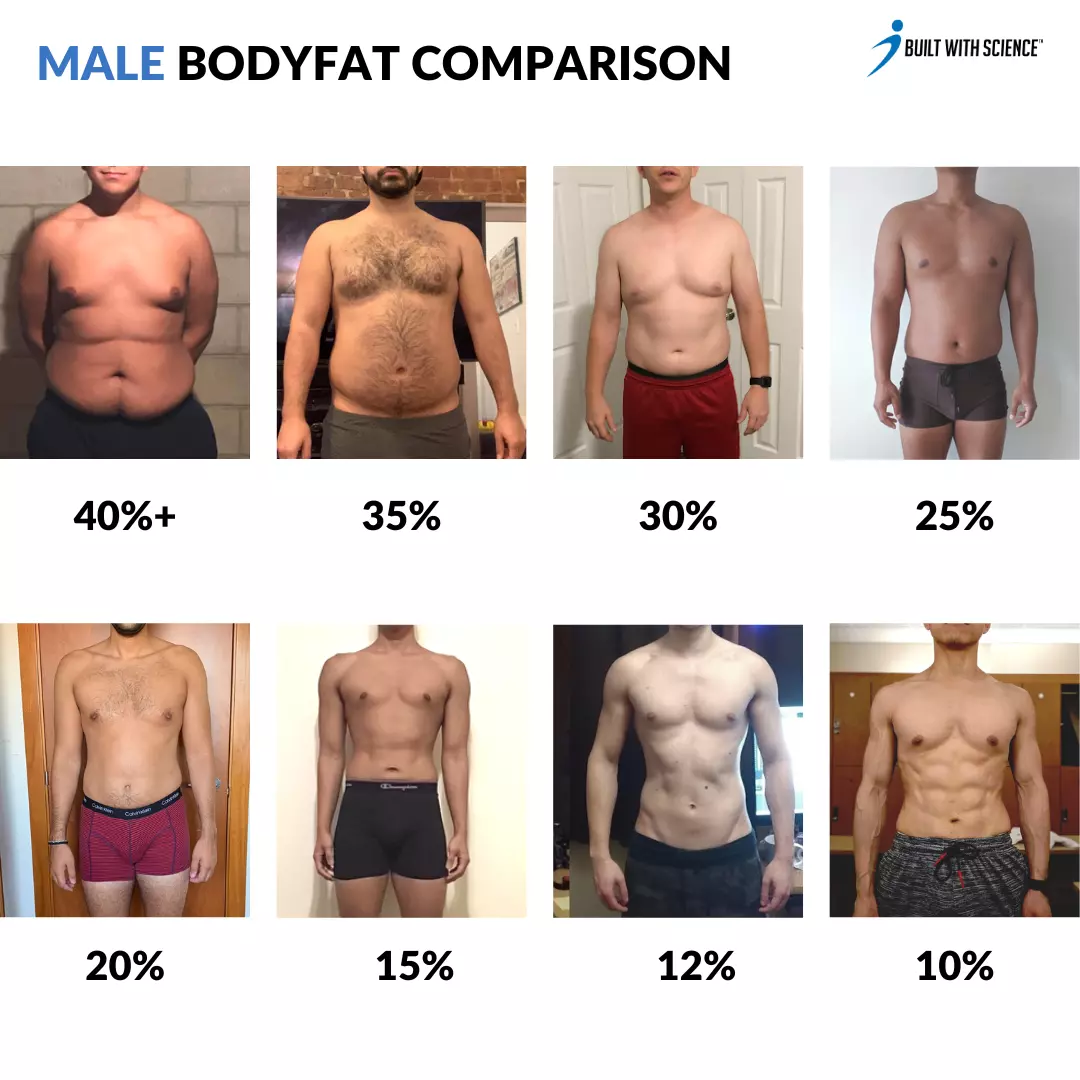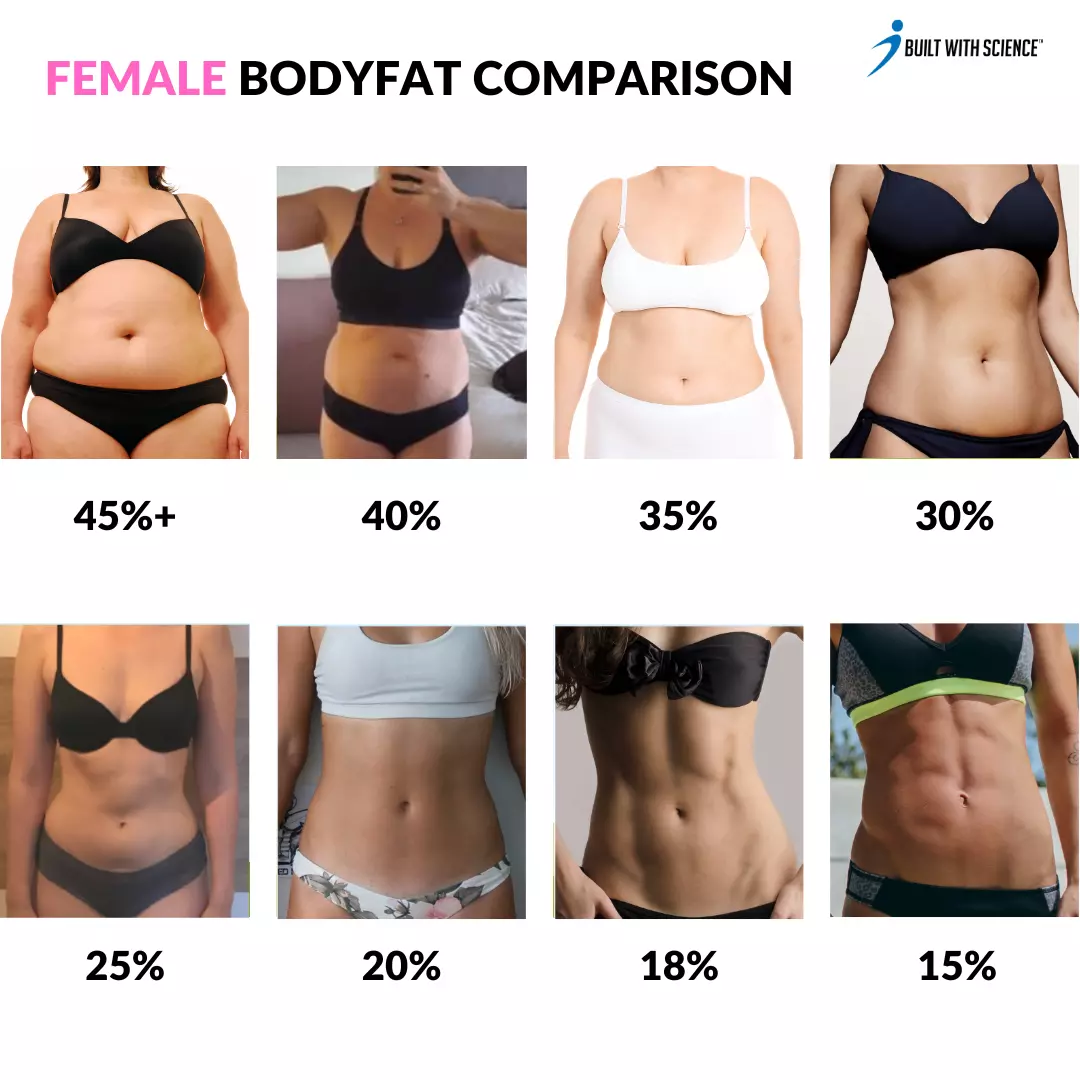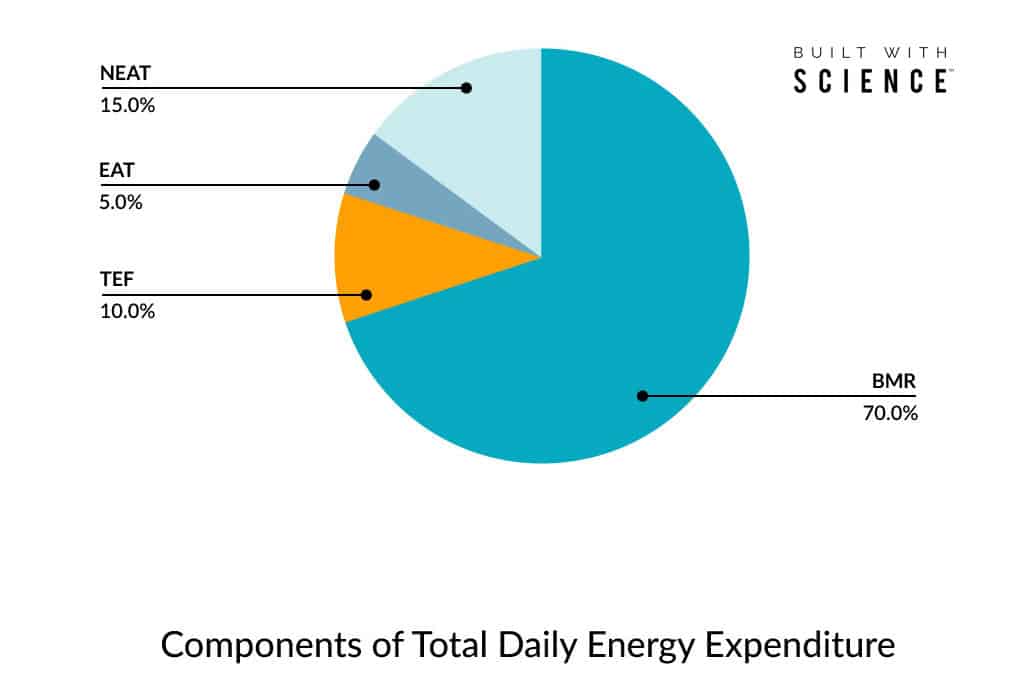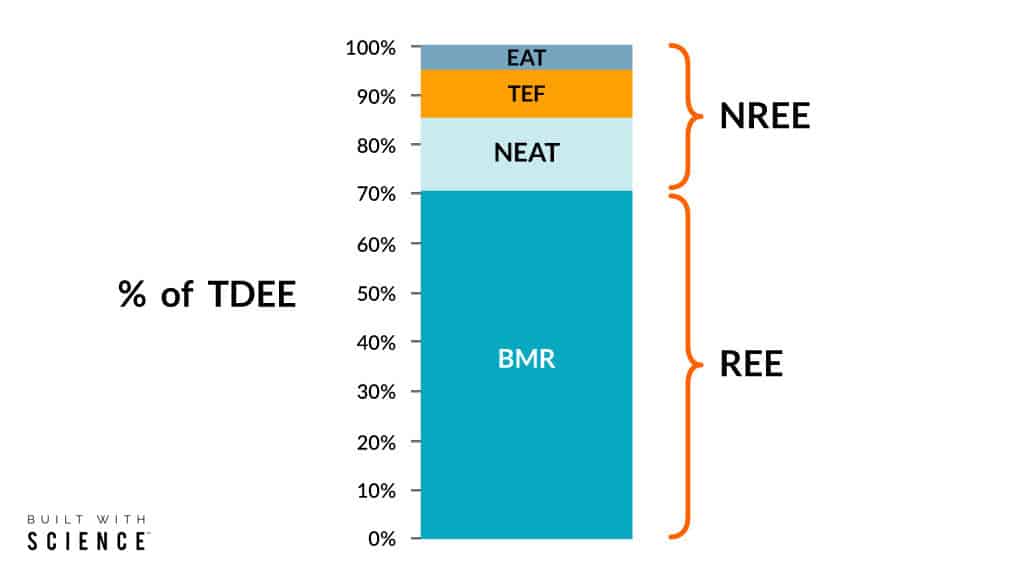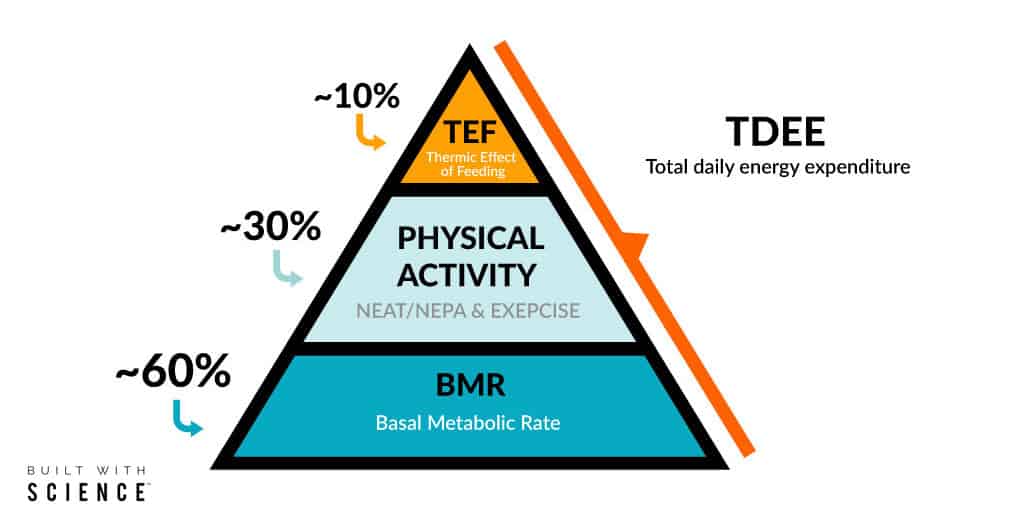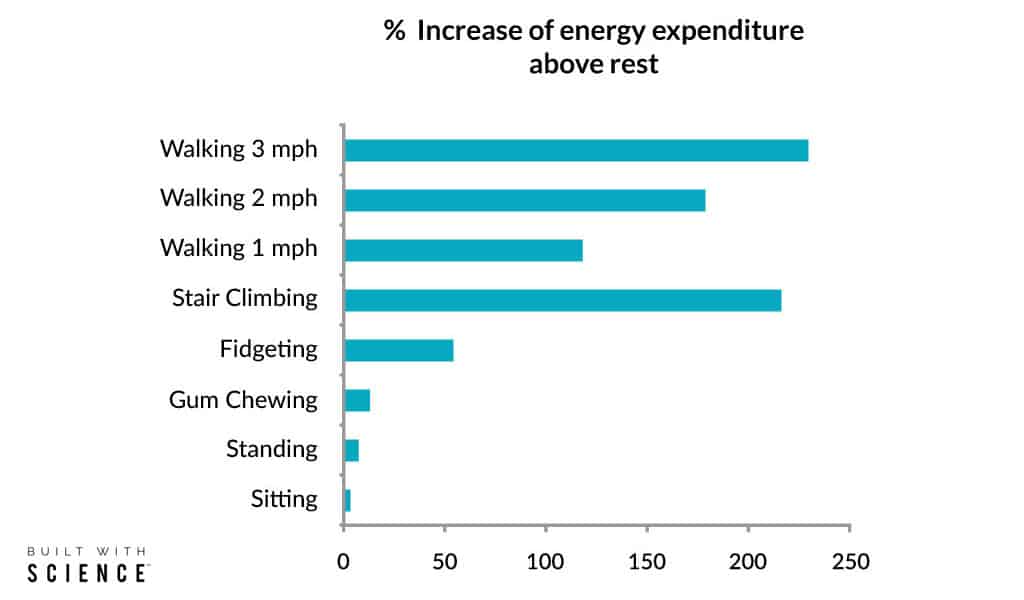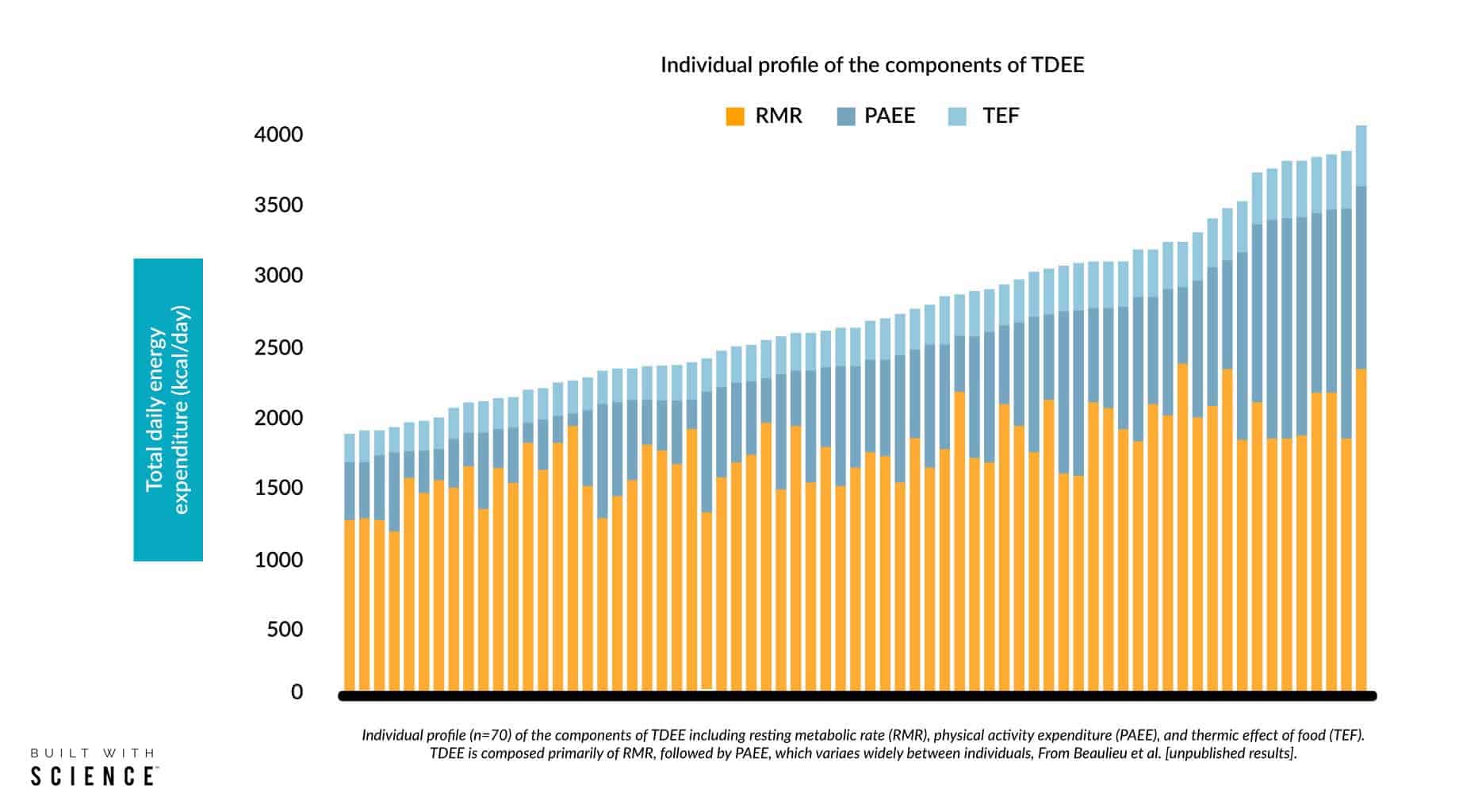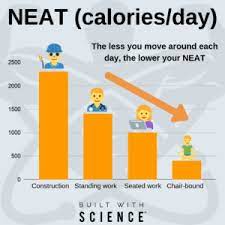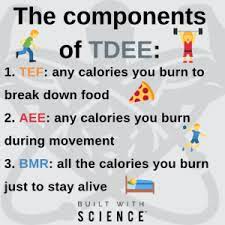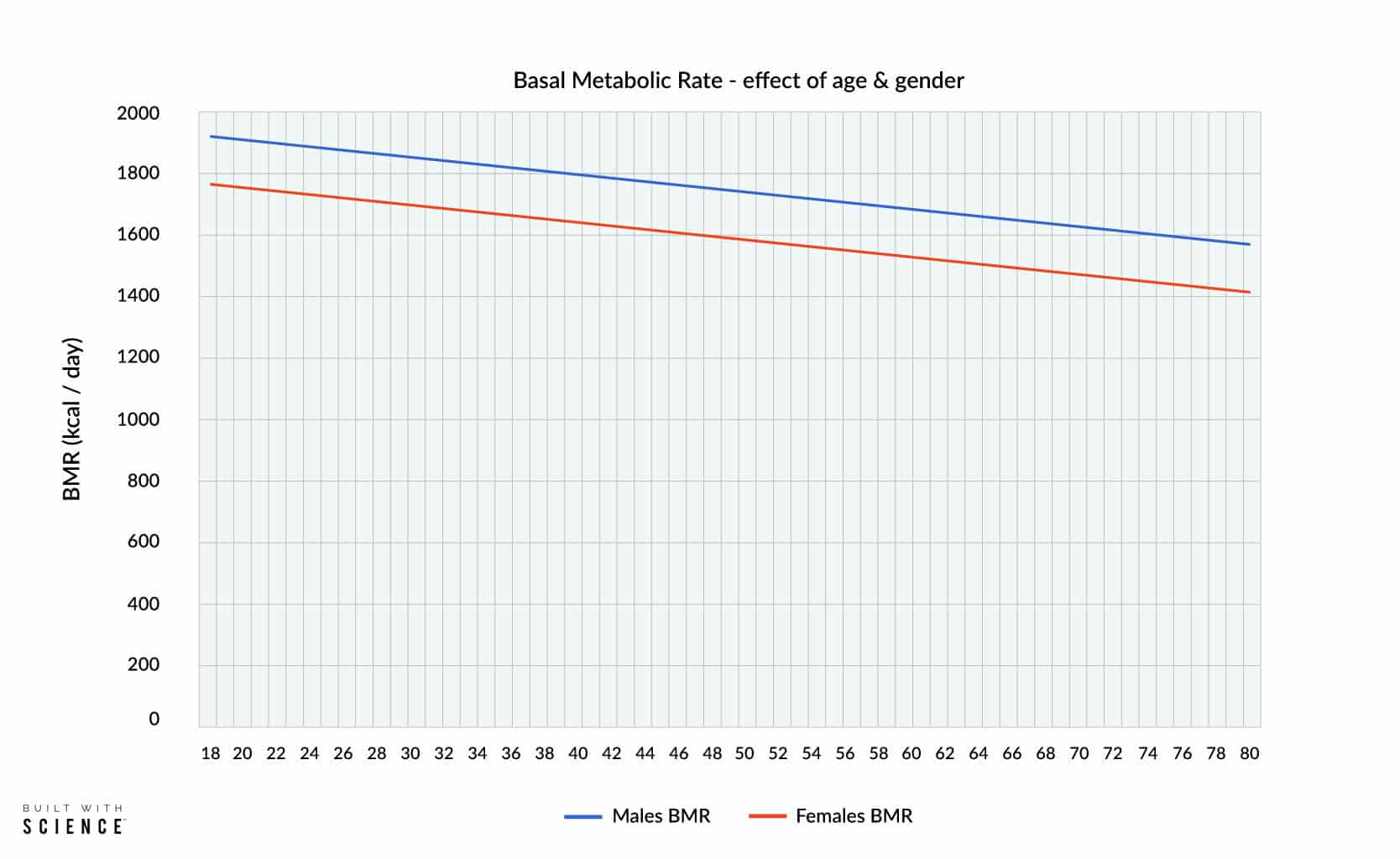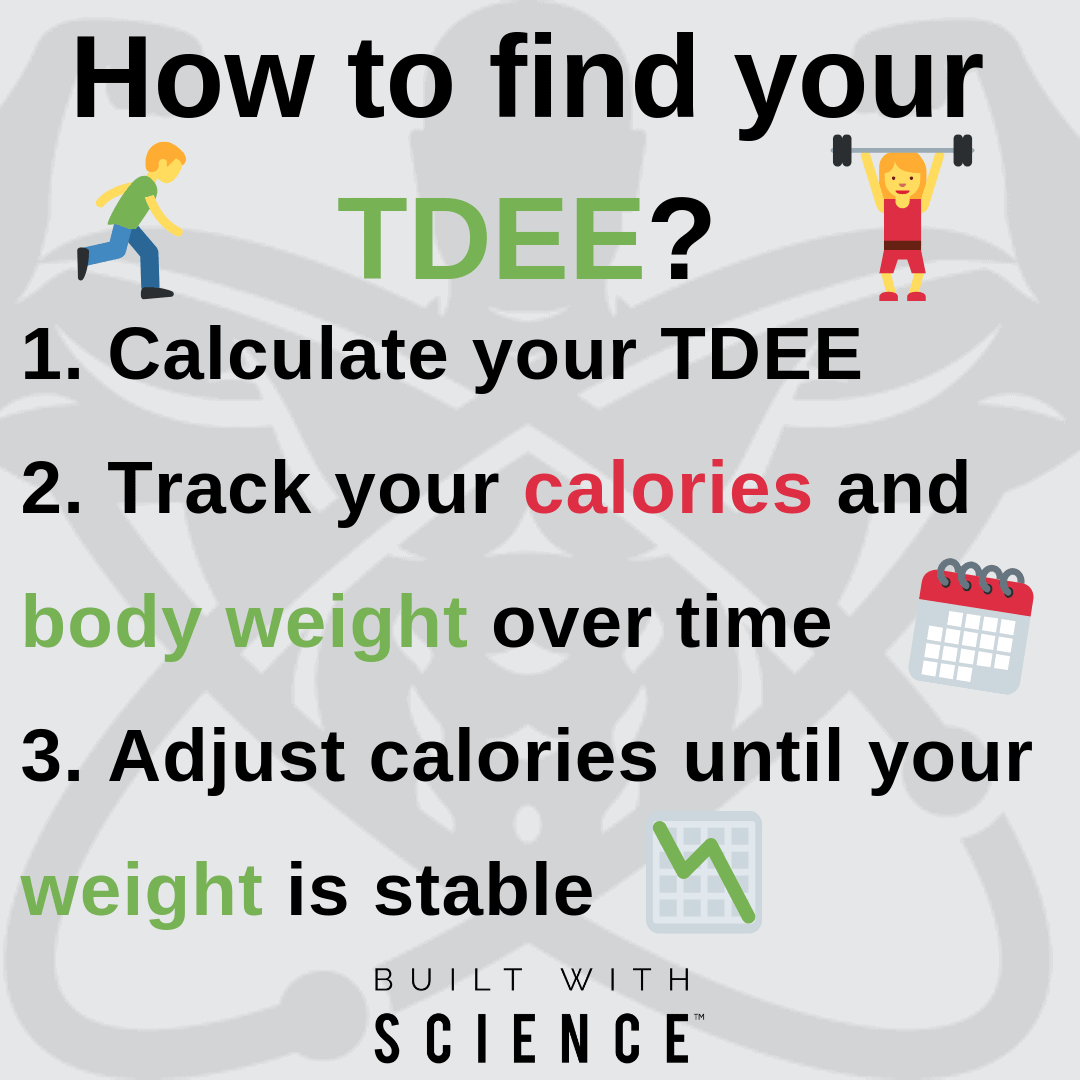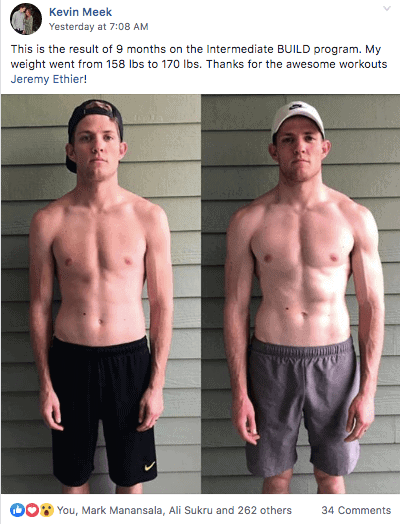TDEE 101: How Many Calories Should I Eat?
If you want to learn exactly what TDEE is, why it matters, and how many calories you should be eating... Then you need to read this article.
Since you’re reading this, odds are want to lose fat, or build muscle. And if you're like most people, you’ve heard a lot of conflicting diet advice.
It seems like everywhere you look, people are telling you what or when you should eat.
For instance, you’ll see Terry Crews rave about the wonders of intermittent fasting. Or, you may read articles about the 25 best fat-burning foods.
But then, you’ll notice that The Rock looks great eating 7 meals a day. Or that some people lose weight eating nothing but cookies....What gives?
How could all these people look so great, on such different diets? And why haven’t you figured it out yet?
Well, what if I told you that all the diet advice you’ve heard before, is actually nonsense? That really, in the end, none of that matters. And that to have your dream body, all you ever need to know, is one number…
Well, that would be true, for the most part.
And this “magical number” is your TDEE. That is, the number of calories that you burn each day.
So, you may be thinking, how can I find my TDEE? Or better yet, how can TDEE help me get to my dream body?
Well, here we tell you all about TDEE. Plus how you can use it to shed fat or gain size.
As I’ve said in the past, your nutrition will hands down be the most important factor when it comes to transforming your body. I used to be completely lost as to how to approach my nutrition and I know a lot of you out there are as well. This is exactly why within my Built With Science programs, I not only cover training but also stress the importance of nutrition. In fact, I even developed a custom built nutrition software designed to optimize your diet based on your own stats and goal. For more information:
Click the button below to take my analysis quiz to discover the best program for you:
↓
TDEE CALCULATOR
WHAT IS TDEE?
TDEE stands for “Total Daily Energy Expenditure.'' In brief, TDEE is the number of calories you burn each day.
To start off, calories are a basic unit of energy. We burn calories every time we breath, and take in calories whenever we eat.
Now, the number of calories you burn each day varies. Since your TDEE depends on how much you move, how much you eat, and how many calories you burn at rest.
But on average, you burn some number of calories per day. And that's what we call your TDEE.
Why should you care about your TDEE though?
WHY TDEE MATTERS SO MUCH
Well, because if you want to lose fat, then you must eat less than your TDEE. And on the flip side, if you want to build muscle, you should eat (a bit) more than your TDEE.
Hence why knowing your TDEE matters so much. Since it tells you just how many calories that you should eat to either drop fat or build muscle. (Or, in some cases, both.)
And later we'll show you how you can use your TDEE to shape your body. But first, let’s look into the main factors that make up and alter your TDEE:
COMPONENTS OF TDEE
Let’s start off with your resting energy output, or “BMR”:
BMR
Basal metabolic rate, or BMR, is the number of calories you burn at rest in a day. Or in other words, it's your daily calorie expenditure if you were to do nothing - no eating or moving, just breathing.
In essence, BMR is the number of calories you burn to maintain basic bodily functions. You know, the ones that keep you alive. Like pumping blood to your heart, for instance.
Now, imagine waking up one morning, laying in bed all day, and falling asleep again that night. The whole time, not moving at all. Well in this case, the number of calories you would burn is your BMR.
And of note, BMR makes up most of your TDEE. Since in fact, it accounts for ~50-75% of your daily energy expenditure:
But with that said, BMR varies quite a bit between people; by ~250 calories per day on average. Hence, your friend’s TDEE may be way different than your TDEE. Which matters a lot, since individual variation changes the number of calories that you'll need to eat to build muscle or lose fat. And so we’ll discuss how that applies to you in more detail later.
TEF
The thermic effect of food, or TEF, is the number of calories you burn to digest and absorb food. But this is also known as DIT, or diet-induced thermogenesis.
In brief, the TEF accounts for every calorie you burn to break down the food you eat.
And in general, based on averages, we assume that TEF is a constant at ~10% of your TDEE.
Which does makes sense, since the TEF tends to account for ~8-20% of the calories you eat.
So, if you eat 2,000 calories per day, you might burn ~260 of those calories through digestion. And if we guess that you burn say, 2,100 calories per day, then this would be ~12% of your TDEE.
But note, the TEF is larger for mixed meals, and higher in lean people [2,3,4]. Thus, you could burn as much as 25% of the calories you eat just through digestion.
And lastly, the TEF tends to be the most constant part of your TDEE. But this is in stark contrast to our final component of TDEE:
AEE
Activity energy expenditure, or AEE, is the number of calories you burn through movement.
You see, every time you move, you burn calories. And all that energy burned while moving adds to your AEE.
But in fact, you can boost your AEE without moving at all. Just by standing, instead of sitting, you’ll burn a few extra calories.
Notice, different types of movement can change AEE by more or less.
So you see, activity energy expenditure can vary a ton between people. Since it accounts for anywhere from ~5%, all the way up to 40% of your TDEE. Which is clearly a huge range.
AEE accounts for all the calories you burn through exercise, as well as those burned through normal movement.
That is, any calories you burn while washing the dishes, running at the gym, and/or walking to your car. Thus, it can be further broken down into EAT and NEAT:
EAT
EAT stands for “exercise activity thermogenesis." Which accounts for all of the calories you burn through planned exercise.
Of course, every training session burns calories. And so all exercise can help boost your EAT.
Hence, the more you exercise, the more calories you burn through EAT. For instance, in some athletes, EAT can make up as much as 15-30% [2] of TDEE.
But note, more EAT won’t always help boost your daily calorie expenditure by much. As in general, it accounts for just ~5% of our TDEE. Which is because many of us don’t exercise a ton...
NEAT
NEAT, or “non-exercise activity thermogenesis,” is the least consistent part of your TDEE. Since it accounts for all the calories you burn through unplanned movement. Which, for example, can include walking your dog, scratching your back, or typing on the computer.
Thus, all the calories you burn through unplanned activity, add to your NEAT.
And so NEAT goes up when you fidget and/or move around a lot in a day.
Now if you're sedentary, for instance, then NEAT might only make up 6-10% of your daily energy expenditure. But if you move around much more, then NEAT can add up to over 50% of your TDEE.
To illustrate, construction workers tend to burn many more calories through NEAT. At least, when compared to the average desk-worker:
So, as pictured, an office-worker may burn just 800 calories in NEAT. Yet on the other hand, a construction worker might burn over 2,000 calories per day through NEAT.
And this shows how the number of calories you need to lose fat or build muscle can be way different from someone else. That is, even if you both weigh the same, or have the same amount of muscle mass.
But now, we’ve shown you all that goes into your TDEE. So let’s move on to the many factors that can help change your TDEE.
SUMMARY:
- TDEE stands for “total daily energy expenditure.” Which is the number of calories you burn each day. And your TDEE has 3 components: BMR, TEF, and AEE.
- BMR is the number of calories you burn at rest each day. But sadly, you can’t boost your BMR by all that much.
- Next, the TEF is the number of calories you burn to break down all the food you eat. So, when you eat more calories, the TEF goes up.
- And lastly, your AEE is the number of calories you burn through movement each day. Hence, the more you move in a day, the more calories you burn through AEE.
WHAT DETERMINES YOUR TDEE?
For our calculator, you've put in your age, gender, weight, height, and activity level. As these are all the factors that help us predict your TDEE. And as you now know, these variables can change your TDEE by quite a bit. Hence, your calorie needs may be way higher or lower than someone else's. Let's start with age:
AGE
To start out, your age plays a small role in your TDEE.
In general, the older you are, the lower your BMR. And the lower your BMR, the lower your TDEE (in most cases).
Sadly, when you get older, you burn fewer calories. That is, even at the same body weight and exercise level, your TDEE is lower. This is all because lean mass burns calories [2]. And since you tend to lose lean mass with age.
So all told, as you get older, your TDEE may drop.
GENDER
But, there's far more to TDEE than just age. As for instance, your sex plays a big role in TDEE.
In fact, for the same body weight, age, and activity level, a male has a higher TDEE than a female.
Which is true because women have ~12% higher body fat levels than men. Thus, for the same body weight, a female has less lean mass than a male.
To illustrate, a 200-pound female might have ~24 pounds (11 kg) less lean mass than a male of the same weight.
Now, that’s a lot of lean mass, which burns more calories than fat. And so men tend to burn more calories than women.
BODY SIZE
But more so than anything else, your TDEE tends to scale with body size. Hence, your height and weight factor into the TDEE equation as well.
To be clear, the bigger you are, the higher your TDEE.
In part, because it burns more calories [2] to move a larger body. But mainly because bigger people have more lean mass. And lean mass burns many calories. So the more lean mass you have, the more calories you burn in a day.
Hence, bigger people tend to burn more calories - even if they're high in body fat. Since when you gain fat, you gain some lean mass as well. Which helps boost your TDEE.
So all told, while age, gender, and physical activity still matter, they're not the main factors for TDEE. As in the end, your TDEE mostly depends on how much lean mass you have [2].
In most cases, lean body mass makes up 50-75% of your energy expenditure [2]. That is, more than half of the calories you burn in a day.
And that explains why we needed an estimate of your current body fat %. Since that gives us the info we need to predict your lean body mass. Which allows us to predict your TDEE with more accuracy.
PHYSICAL ACTIVITY
And lastly, your physical activity level can change your TDEE. Since, of course, you burn more calories when you move more.
In brief, the more you move, the higher your TDEE...but the effect is small and varies a lot.
Which is in part why knowing your TDEE is so crucial. I mean, for one, you just don’t burn off that many calories when you exercise more...
HOW MANY CALORIES DOES EXERCISE BURN?
To start off, a bodybuilding-style workout may burn just ~75-250 calories. Plus, in general, you burn a few hundred calories for every hour of cardio. Then, walking a mile burns ~80 calories, and climbing up 11 floors of stairs burns ~20 calories.
Although, that's not always true. Since for example, intense "circuit-style" weight lifting can burn ~265 calories in 30 minutes. And this isn't too far off from "hard" cardio, which burns ~280 calories in that time. But most of the time, lifting and cardio won't burn this many calories.
So, cardio may burn less energy than you expected. But you truly burn even fewer extra calories when you move more. Think about it like this:
On most days, you might burn ~60 calories per hour just living your life. Hence, if you take an hour to burn 200 calories, then it won't add 200 calories to your TDEE. Rather, it would boost your TDEE by just ~140 calories. Since you don't get to add an extra hour to your day.
But further, when you exercise more, you may not burn more calories at all. Let me explain:
WHY EXERCISE MAY NOT BOOST YOUR TDEE
While cardio tends to help us burn more calories, it doesn’t help all of us. As in fact, some of us burn even fewer calories when we exercise more. And here's why:
You see, most people finish a cardio workout, then just carry on as usual. That is, with no major changes in their normal NEAT levels. And so, in most cases, cardio helps you burn more calories. But on the flip side, some people move around a lot less (i.e. get “lazier”) after a workout [2,3,4,5,6,7,8,9]. Thus, their NEAT levels drop, and they burn fewer calories when they train more.
So all told, if exercise turns you into a sloth (e.g. you get “lazier” for the rest of the day), then hard workouts may not help you burn more calories. And thus, while it can boost your TDEE, cardio isn't very reliable. Since it won't always help you move more in a day.
Which is why you need to find out your TDEE. Exercise only helps so much.
SUMMARY:
- Your age, sex, body size, and physical activity level each factor into your TDEE.
- The older you are, the fewer calories you burn. Plus, the larger your body (in height/weight), the higher your TDEE. And further, males burn more calories than females.
- Then, the more you move each day, the more calories you burn. But exercise just doesn’t burn all that many calories. Plus, more exercise won’t always boost your TDEE.
- Hence, adding exercise to a bad diet won’t get you very far. And to make steady progress, you’ll have to know how many calories you should eat every day. Or in brief, you'll need to find out your TDEE.
*NOTE: PHYSICAL ACTIVITY AND OUR TDEE CALCULATOR
As you’ve just learned, your lean body mass is the main factor that helps determine your TDEE.
Or in other words, the more lean body mass you have, the more calories you burn.
With that in mind, our calorie calculator uses the Katch-McArdle formula. Since the Katch formula depends on your lean body mass most of all. So when you put in your body fat %, we can then determine how much lean mass you have. And when we know how much lean mass you have, we can better estimate your daily calorie needs.
Other than lean mass gain, physical activity can help boost your TDEE as well. Since the more you move, the more calories you burn. And as such, the Katch formula uses an “activity multiplier”, which adjusts for your physical activity level:
THE KATCH-MCARDLE ACTIVITY MULTIPLIER
The Katch-McArdle activity multiplier ranges from 1.2 to 1.9 - as follows:
1.2 = Sedentary (little or no exercise)
1.375 = Lightly active (1 to 3 hours of exercise or sports per week)
1.55 = Moderately active (4 to 6 hours of exercise or sports per week)
1.725 = Very active (7 to 9 hours of exercise or sports per week)
1.9 = Highly active (10+ hours of exercise or sports per week)
So all told, if you burn 2,200 calories per day when “sedentary,” then moving up to “lightly active” would boost your TDEE by 320 calories. Thus, your new TDEE would be 2,520 calories per day. Then, going from “lightly active” to “moderately active” would bring your TDEE up to 2,840 calories. That is, up by 320 more calories/day.
But wait! There’s a problem...As most of us move a lot less than we would predict.
Indeed, we can be quite bad at predicting our daily movement levels [2,3,4,5]. Or in brief, most of us overestimate our physical activity level [2,3,4].
Now, if you overestimate your activity level, then you could wind up overeating. Which would lead to more fat gain than you want. And sadly, that won’t help boost muscle gain by much either [2,3,4,5].
So to avoid extra fat gain, assess your average weekly activity levels closely. As you'll want to make sure that you pick the right activity setting!
In essence, you should pick the setting that best represents your true physical activity level. That is, how active you are on a consistent basis. Not just what you might do on a "good week."
SUMMARY:
- Your TDEE mostly depends on how much lean body mass you have. That is, the more lean mass you have, the more calories you tend to burn. But then, movement can add to your daily calorie expenditure too.
- Thus, the more you move, the higher your TDEE. And so, our calorie calculator uses the Katch-McArdle activity multiplier (scaled from 1.2-1.9). In brief, we multiply your BMR by your (selected) activity level. Which is what we need to predict your TDEE.
- But, there is a problem. As most of us tend to move far less than we would guess. So you should closely consider your daily movement level before you choose an activity setting. Since this will help you avoid extra fat gain or slow weight loss.
Feeling a little overwhelmed? Don't worry. Our 3-on-1 coaching program can help. You will not only have a dietitian to customize your nutrition plan (so you never have to calculate your own TDEE!), but also a coach to focus on your training plans - plus, there's me to answer your questions every month! You'll achieve your dream physique in record-breaking time. Sounds good? Let's get started then:
Click the button below to find out more about the 3-on-1 coaching program:
↓
PUTTING IT ALL TOGETHER
If you want to transform your physique, put on size, and drop body fat, then you'll have to know your TDEE.
And the better you can nail down your TDEE, the better you can build muscle and lose fat.
But luckily, assuming that you used our calculator, you know your TDEE....Right?
Well, not really.
At this point, you kind of know your TDEE. Since, to be honest, our calculator just gave you a rough estimate.
And believe it or not, that's fine. As we’ll now tell you how you can find your true TDEE:
DETERMINING YOUR TRUE TDEE
Using our calculator (above), you’ve now found your TDEE. But here’s the catch:
The number you got back may not match your true TDEE.
When it's all said and done, this calculator - any online calculator - can only guess how many calories you burn each day. And while our calculator gives out a good estimate on average, it may not be right for you.
For example, in (muscular) weight-lifters, every single TDEE formula underestimated BMR. But worse, they all missed the mark by over 375 calories per day...
...thus, TDEE calculators can only guess how many calories you burn in a day. As your calorie needs are unique to you [2].
WHY OUR CALCULATOR STILL WORKS
But with that said, this calculator does give you a good, ballpark figure. And so it can help you get to your goal weight faster.
Thus, our suggested calorie target may not be ideal, but it’s close enough. Plus, if even our guess is off by a few hundred calories per day, you’ll still be able to make good progress.
So all told, you should use the number that our calculator gave you - at least to start out with.
Then, as time goes on, you’ll want to change your calorie intake based on your results. That is, based on changes in your body weight over time.
But if you want to do so, you'll first need to track how much you eat, and how much you weigh. As when you track these variables, you can tell if your true TDEE matches our estimate. And if our guess was off, then you can adjust to find your true TDEE in the end.
Now, if you're confused, don’t worry. We’ll help clear things up with some good examples in the sections below. So read on to learn how many calories you should eat, based on your main goal.
SUMMARY:
- An online calculator can only guess your TDEE. And it won’t always be accurate. Since everyone’s TDEE is unique to them.
- But with that said, our calculator can give you a good starting point. As the number you got back is still close enough to your true TDEE.
- Now, in time, you can alter your calorie intake based on how your body weight changes. But you'll first need to track weight and calorie intake for at least a few weeks. So read on to learn how...
So...HOW MANY CALORIES SHOULD I EAT?
At this point, you have a good estimate of your TDEE, and some background on what goes into it. Plus, you know why the TDEE you got back may not be 100% on point.
But now, for the real question: how many calories should I eat in a day?
In the end, your ideal calorie intake will vary, based on your goals. But in any case, energy balance applies. And in brief, here's what energy balance tells us:
You'll have to burn more calories than you eat if you want to lose weight. And vice versa.
So, if you want to lose weight, then you should eat fewer calories than your TDEE. But on the flip side, if you want to gain weight, you should eat more than your TDEE.
Or, if you like your body as is, then eat enough to roughly match your daily energy expenditure.
And now, we'll show you step-by-step how to use this article and TDEE calculator to find out EXACTLY how many calories you should eat. For either muscle growth, or fat loss...
1) FAT LOSS: WHAT’S REASONABLE?
So, you have your suggested calorie intake for weight loss.
Which is great. But now you may be left thinking: How fast should I aim to lose fat?
Well, all told, your ideal rate of weight loss depends on your starting point:
YOUR STARTING POINT:
In brief, your starting point depends on how much body fat you have right now.
To be clear, the higher you are in body fat, the faster you can lose fat without risking muscle loss.
Now, to determine specific rates of weight loss, a 2005 study showed us that each pound of fat can release up to ~31 calories per day. But note, the lead author got this calculation wrong. And he later said that the true number was more like ~22 calories per day. Which means that each pound of your body fat can release closer to ~22 calories per day. So luckily for us, Greg Nuckols used this finding to create a basic weight loss formula:
To determine your ideal weekly % rate of weight loss, just take your body fat % and divide it by 20.
FIND YOUR IDEAL RATE OF WEIGHT LOSS
For example, if you’re 16% body fat, you can “safely” lose ~0.8% of your body weight per week. Then, if you weigh 180 pounds (82 kg), this 0.8% of your body weight means losing ~1.44 lbs (.65 kg) per week.
But in another case, if you’re 180 pounds (82 kg) at 10% body fat, you should lose weight slower. As now, if we take your bf%/20, you can safely lose just ~0.5% of your body weight. Which is much less weight loss; just ~0.9 lbs (0.4 kg) per week.
So if we assume that there are ~3,500 calories in a pound of body fat, you can then set your calorie intake to hit your target rate of weight loss.
Note: Our calculator has done that for you.
And if that all seems hard, then no worries. This “body fat % over 20” rule can be broken down a bit more: lose 0.5-1.0% of your body weight per week.
For instance, Dave starts his cut at 20% body fat. At first, he aims to lose 1% of his body weight per week.
And a few months later, Dave is just 13% body fat. But since he’s leaner now, he should cut more slowly. This time, losing just ~0.7% of his body weight per week.
Next, in a few more weeks, he is approaching 10% body fat. So to play it safe, Dave should only lose ~0.5% of his body weight per week.
Thus, the leaner you get, the slower your ideal rate of weight loss.
And lastly, if you’re obese (very high in body fat), you could get by on a faster rate of weight loss. For example, up to ~1.5% of your body weight per week. But losing weight this fast may be hard. Since you'd have to keep up a very low-calorie diet for some time.
MAKING ADJUSTMENTS TO FIND YOUR TRUE TDEE:
Our calculator’s suggested calorie intake should help you hit your goal rate of weight loss.
Yet, you will need to track your body weight over time. As to make sure that you lose fat on target. And if you're not on track with your weekly weight loss goal, then you should adjust your calories over time.
To be clear:
- If you’ve lost weight too slowly relative to your weekly goal, then cut ~100 calories. For example, go from 2,300 to 2,200 calories per day, then see how your weight responds that week. And if weight loss speeds up, just keep eating 2,200 calories per day.
- If you've lost weight too fast, then increase your calorie intake by ~100 calories. Depending on how fast you're losing weight. For instance, go from 2,300 to 2,400 calories per day to slow down your weight loss.
Then, repeat this process until you start to lose weight at a good rate (e.g. 0.5-1% of your weight per week). And make sure that you don't make any of these common weight loss mistakes.
PRACTICAL EXAMPLE:
Charlie is a 180-pound male at 15% body fat. And he wants to drop 10 lbs.
Like you, Charlie used this calculator to find his TDEE: 2,500 calories.
Then he picked the "fat loss" option, which told him to eat 2,000 calories per day.
Now, after eating 2,000 calories per day for 3 weeks, Charlie expects ~3 lbs of weight loss (1 lb of weight loss per week).
But, he’s only lost 1 lb. Thus, his weight hasn’t dropped as planned, and he's now 2 lbs short of his goal. So to speed things up, he drops to 1,900 calories per day, then continues to weigh in daily.
After 2 more weeks on lower calories, Charlie starts to make good progress. Since now he loses ~1 pound a week on average.
Pleased with his results, he keeps up the 1,900-calorie diet. And soon, he reaches his goal weight of 170 lbs.
As you can see, the calorie calculator got Charlie’s TDEE wrong. Yet, Charlie tracked his calories and body weight over time. Hence, he was able to adjust his calorie intake as needed. Which in the end, got him all the way down to his goal weight.
So remember, this TDEE calculator can only give you a rough starting point. Then, it’s on you to watch your weight and adjust your calories over time. That is, unless you hire a coach to help you along.
SUMMARY:
- In general, aim to lose 0.5-1% of your body weight per week. Losing more like 1% if you’re at a higher body fat (e.g. ~25% body fat), and more like 0.5% if you’re leaner (e.g. ~10% body fat). But don’t cut any faster than this, as you’ll risk muscle loss. Especially if you’re lean.
- Our calculator’s suggested calorie intake helps you hit this rate of weight loss. Then, to make sure you lose as planned, just track your body weight over time and adjust your calories as needed.
- If you don't lose weight as planned, then cut 100 calories. But if you lose weight too fast, then add 100 calories to your diet. Then keep on watching your weight over time. And lastly, adjust again if needed.
- Next, if you make good progress at this new calorie level, just keep it going. And if not, then repeat the above adjustment process.
2) MUSCLE GAIN: HOW FAST CAN YOU GROW?
Now, let's say you're on the other end of the spectrum. And so you want to add size or build muscle.
Well, your goal rate of weight gain will depend on your current body fat level and training status.
CURRENT BODY FAT LEVEL:
In general, if you're lean, you're more likely to benefit from a bulk. That is, eating more calories than you burn. As to help your muscles recover faster from training and grow back stronger.
To build as much muscle as possible, you should be in a calorie surplus [2]. Or in other words, your muscles will grow faster when you're gaining weight.
Now with that said, you can still build (or at least maintain) muscle mass as you lose fat. Yet, you won't be able to build muscle quite as fast as you could with a calorie surplus.
...But note, in practice, it just doesn’t make sense to gain weight if you’re overweight or obese.
You see, bulking up when you’re overweight may be less efficient. Since people at a higher body fat build less lean mass per unit weight gain [2]. And more importantly, if your weight gets too high, you might need a long diet to "reveal" your gains.
So, as a general rule, don’t bulk when you're higher than ~15-16% body fat. Unless you want to look like a sumo wrestler, that is.
Otherwise, eating at the right calorie surplus ("bulking") can help you reach your goals faster.
But, how quickly should you aim to gain weight? And what’s the ideal calorie surplus? Read on for more:
TRAINING STATUS:
If you’re a novice lifter, you can bulk up at a faster rate. Since you can build more muscle mass as a novice. For example, the average new lifter can gain ~3 pounds of muscle (1.36 kg) per month [2].
But as an intermediate lifter, you can’t gain muscle quite as quickly. Although, you can still gain a good bit of muscle in time. Thus, as an intermediate, you should gain ~1.5-2 pounds (.68-.91 kg) per month when bulking.
And lastly, as an advanced lifter, muscle growth is very slow. You can still grow, but much slower than you used to.
Hence, to avoid adding lots of extra fat, advanced lifters should gain ~1 pound (.45 kg) per month when bulking.
So all told:
- As a newbie or novice lifter (less than 1 year of consistent weight lifting), aim to gain roughly 3-4 lbs a month
- Then, as a more intermediate lifter (1-3 years of consistent weight lifting), aim to gain roughly 1.5-2 lbs a month
- Later, as a more advanced lifter (3+ years of consistent weight lifting), aim to gain roughly 1 lb a month
*Note: Our TDEE calculator takes these weight gain targets into account when determining your ideal calorie intake. Hence why we ask for your training status. And note, women might want to gain weight a bit slower. Say, at maybe half this rate.
MAKING ADJUSTMENTS TO FIND YOUR TRUE TDEE:
Again, as with the fat loss scenario, our calculator gives you what it thinks your calorie intake should be. Based on both the stats you gave it, and your goal.
But, this calorie number may not be 100% right. And the only way to find out is by putting it into practice. Hence, you need to track your results, then adjust calorie intake as needed.
For instance:
- If you’ve gained weight too slowly relative to your target, then add ~100 calories. For example, go from 2,400 to 2,500 calories per day, then keep watching your weight. Next, if weight gain then speeds up to a good rate, just keep eating 2,500 calories per day. And if not, then add another 100 calories.
- If you've gained weight too fast, then cut ~100-200 calories. Depending on how much more weight you gained. For instance, go from 2,400 to 2,200 calories per day. Then, keep tracking weight for a week, and cut 100-200 more calories if you need to.
PRACTICAL EXAMPLE:
Bob wants to gain weight, going from 180 pounds to 190 pounds. He's an intermediate lifter, so he should gain ~1.5-2 lbs (.68-.91 kg) per month.
After one month, he's only gained 1 lb, bringing his weight to 181 pounds.
To gain weight faster, he ups calories by 100, going from 2,400 to 2,500 calories per day. Then, he watches his weight to see how it changes.
Another month passes, and now Bob weighs 182.5 pounds. So, he gained 1.5 lbs last month. Since Bob is now gaining weight on pace with his goal, he should keep his calories where they are.
Hence, Bob just keeps eating 2,500 calories and watching the scale on his way to 190 pounds. Only adjusting his calorie intake as needed.
SUMMARY:
- You may have more to gain from a bulk if you’re lean to start out. Since bulking when you’re overweight may go against your physique goals. And of note, newbies have the most to gain from a bulk.
- As a novice lifter, you can gain weight and muscle faster (e.g. 3 lbs/1.36 kg per month). But if you’ve been training longer, your best gains are past you. And as such, you should gain weight slower (e.g. 1-2 lbs/.45-.91 kg per month). Which will help you avoid extra fat gain.
- If you've gained weight too slowly, then up your calorie intake by 100, and keep watching your weight. But if you’ve gained weight too quickly, then cut 100-200 calories.
- Lastly, keep up this new calorie level if your weight changes as planned. And if not, then adjust further as needed.
TAKEAWAY
So, you’ve made it to the end of the article. Congrats!
That means you’ve learned the basics of how to set up your diet for muscle growth and/or fat loss.
To re-hash:
- Step 1: Use our calculator to find out your suggested calorie intake.
- Step 2: Start eating at this calorie level. And use an app like FitGenie or MyFitnessPal to start tracking your calories.
- Step 3: Then, keep tracking your calorie intake and body weight over time.
- Step 4: Lastly, if things are going well, then keep it up. But if not, you should adjust your calorie intake and watch how your weight changes. And keep that up until you start to gain or lose weight at a good rate.
- Step 5: Do step 4 for long enough (with proper weight training, of course) - and sooner or later, you'll have your dream body.
So there you have it!
HOW TO "AUTOMATE" THE PROCESS
Now, what's mentioned above I'll admit is quite a tedious process. Although highly effective when done right, tedious nonetheless and requires you to make the right adjustments.
And that's exactly why within our Built With Science programs, we've actually created a nutrition software that completely automates the above step-by-step procedure for you.
By using an evidence-based algorithm and your personal data, it determines what your TRUE TDEE is and EXACTLY how many calories you should eat to hit your weekly weight change.
This, combined with a fully optimized step-by-step training routine (which you'll also receive), is the key to transforming your body as effectively as possible.
...and it's produced incredible results for members.
Kevin, whose main goal was to build muscle:
And Shahril, whose main goal was to lean down (lose fat):
To learn more about this program and what it can do for you, simply take the body analysis quiz below so we can determine what program we think is best for you:
Click the button below to take my analysis quiz to discover the best program for you:
↓






